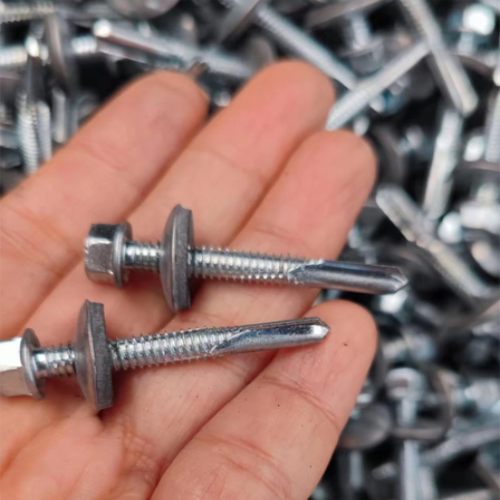Comparison of Wood Screws and Self-Tapping Screws from Leading Manufacturers in the Industry
Wood Screws vs. Self-Tapping Screws A Comprehensive Guide for Manufacturers
When it comes to fastening materials in woodworking and construction industries, understanding the differences between wood screws and self-tapping screws is crucial for manufacturers. Each type of screw is designed for specific applications, and choosing the right one can significantly affect the integrity and longevity of the project. In this article, we will explore the features, benefits, and ideal applications of these two types of screws, providing useful insights for manufacturers.
Wood Screws
Wood screws are designed specifically for joining pieces of wood together. They typically feature a sharp point, coarse threads that run along the shaft, and a head that can be slotted, Phillips, or square. The design of wood screws allows them to create a strong grip in wood fibers, making them ideal for a variety of woodworking tasks.
Advantages of Wood Screws 1. Strong Hold The coarse threads provide excellent wood-to-wood grip, reducing the risk of loosening over time. 2. Reduced Splitting The pointed tip helps start the screw without requiring a pre-drilled hole, minimizing the chance of splitting the wood. 3. Variety Wood screws come in many lengths and diameters, allowing manufacturers to select the ideal size for their specific applications.
Applications of Wood Screws Wood screws are commonly used in furniture making, cabinetry, and all types of wooden structures. They are suitable for both indoor and outdoor projects, especially when treated for weather resistance.
Self-Tapping Screws
Self-tapping screws, on the other hand, are designed to create their own hole as they are driven into material. These screws feature a sharp, drill-like point that allows them to cut through materials like metal, plastic, or wood without the need for a pre-drilled hole. They are available in various head types and thread designs, including fine and coarse threads, suitable for defining their purpose.
wood screw vs self tapping screw manufacturer

Advantages of Self-Tapping Screws 1. Efficiency The ability to self-tap eliminates the need for a separate drilling step, saving time in assembly and installation. 2. Versatility Self-tapping screws can be used in a variety of materials such as metal, plastic, and composites, making them suitable for diverse applications. 3. Enhanced Performance They provide a secure fastening solution with less risk of stripping than standard screws due to their design.
Applications of Self-Tapping Screws Self-tapping screws are widely used in various industries, including automotive, manufacturing, and construction. They are particularly useful in metal roofing, siding, and any application where a rapid assembly is required.
Choosing the Right Screw
When it comes to selecting between wood screws and self-tapping screws, manufacturers should consider the application's requirements. Factors such as the material being used, the stress expected on the joint, and environmental conditions can influence the choice.
1. Material Compatibility For wood and engineered wood products, wood screws are typically the best choice. Conversely, self-tapping screws are preferable for metal and plastic. 2. Installation Process Self-tapping screws save time, especially in mass-production environments where various materials are involved.
3. Longevity and Maintenance Evaluating the conditions (exposure to moisture, load) can also guide the choice towards the most durable option.
Conclusion
In summary, both wood screws and self-tapping screws play vital roles in the manufacturing industry, serving unique purposes based on their design and intended use. By understanding their differences, advantages, and applications, manufacturers can make informed decisions that enhance their products' quality and performance. Whether constructing furniture or assembling metal structures, selecting the right screw is essential for achieving long-lasting results.
-
Top Choices for Plasterboard FixingNewsDec.26,2024
-
The Versatility of Specialty WashersNewsDec.26,2024
-
Secure Your ProjectsNewsDec.26,2024
-
Essential Screws for Chipboard Flooring ProjectsNewsDec.26,2024
-
Choosing the Right Drywall ScrewsNewsDec.26,2024
-
Black Phosphate Screws for Superior PerformanceNewsDec.26,2024
-
The Versatile Choice of Nylon Flat Washers for Your NeedsNewsDec.18,2024










